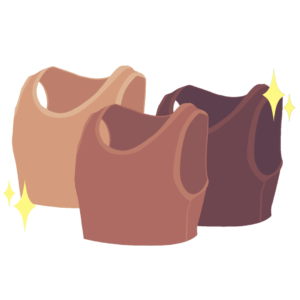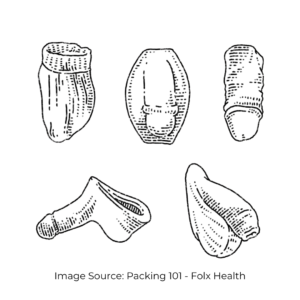Ayush’s Journey – A roadmap to transmasculine transitioning
Avali
Author: Avali (they/them)

For as long as Ayush could remember, he had a feeling that he was different. Not good, not bad, but different. Before he picked out a shiny new name for himself and became known as Ayush – a name that became a celebration of his identity, his personhood, his freedom, his life — he was called something else, known as something else, something that he increasingly questioned, doubted, and eventually grew out of — like a pair of gifted pants too short for his stature.
Ayush was a huge fan of cinema growing up, and would spend hours in front of the mirror growing up, trying to emulate the heroes he would see on the screen. Even though he always thought of himself as masculine, he never considered the possibility of being transgender. He grew up in a small town, with no access to information that could facilitate an exploration of his gender, his identity. He only knew transgender people as transgender women, especially Hijra women, as they often frequented big celebrations and weddings in his busy neighborhood.
As Ayush matured into a young adult, he migrated to a big city to pursue a degree in higher education. At his university, he became familiar with groups and collectives of LGBTQIA+ people on his campus, and it was fate that brought him to a small workshop facilitated by a transgender activist called Vivaan. This was the first time he felt like he met someone like him, and as the workshop went on, Ayush felt as if Vivaan was echoing his life back to him, as if every experience that Ayush had, was some variation of the same that Vivaan had gone through in his life.

Vivaan spoke about his experiences as a transgender man, and Ayush felt like he had been handed a key to unlock the mysteries of his own identity. He decided to approach Vivaan after a few months from the day of the workshop – months he spent in exhilarating and anxious contemplation and reflection, coming up with questions about transitioning that he felt he needed to ask Vivaan. If Ayush seems like someone you relate to, or if you feel like you’ve been in Ayush’s shoes before, the questions he had and the responses he received from Vivaan might be helpful for you too!
Ayush : “I feel like I associate myself with male characters on screen and in books, I am interested in doing things that make me feel more masculine like playing cricket or wearing shirts, and I don’t mind being referred to as ‘sir’. But I am not sure if I identify as a man yet. Is this normal?”
Vivaan : Absolutely! There are many different ways of experiencing gender, and many different experiences of being transgender, and no one way is the correct and only way!
It is possible to neither identify as a man or as a woman. There are many people with experiences of gender beyond the binary, or experiences of gender as more fluid. There are non-binary people, agender people, genderqueer people, and many others within transgender communities, and their identities and experiences are absolutely valid, just like yours!
If you feel like you are a masculine person, but do not identify as a man, the identity of a transmasculine person might be a better fit for you. Transmasculine persons identify as masculine, but may not always identify as men. They may be non-binary, agender, or any other gender, but have affinity with masculinity. Your identity totally depends on you and your experience of gender, no one else can label you!
Ayush : “I sometimes feel that I have to go out of my way to make sure that others perceive me as masculine as I feel inside. Does being transmasculine mean that I have to always express myself as masculine in a way that others understand?”

Vivaan : It is true that our society only recognises certain things as masculine — like playing sports, or wearing a shirt and pants, or having short hair. It feels really suffocating to be put in a box all the time! But you don’t have to do anything that does not feel comfortable to you. While our society thinks of gender as a destination, I see it as a journey. It is absolutely alright to explore your gender and express it in as many ways as you feel comfortable and safe doing.
Ayush : “Even though I am comfortable with my gender, I feel a lot of discomfort with my body sometimes, especially while getting dressed before leaving for college. I have a lot of discomfort surrounding my chest. I want my chest to look flat against my body in my clothes, what do I do?”
Vivaan : Chest discomfort, also known as chest dysphoria, is experienced by many transgender men and masculine people, and you are not alone in feeling this way! Chest binding is a technique you could use to make your chest appear flatter – it means wrapping your chest tightly with a garment made of cloth or other material. There are also store-bought binders that you could use to safely bind your chest, make sure you look at the sizing chart of the brand you are buying from.
Ayush : “I don’t know, going off your description — binding sounds a bit painful. Does it hurt to bind your chest, and is there anything I should be careful of while binding?”
Vivaan : It is not always painful, especially if you are binding in a way that your body responds well to. If you are experiencing pain while binding, it is a good idea to stop and figure out if this could be because of the material you are using, the size of your binder, the number of hours you are wearing the binder, and any possible health issues related to your chest. Medical experts recommend that binders must never be worn for more than eight hours, and especially not during any physical exercise, or while sleeping. If you are concerned about the appearance of your chest while exercising, wearing a sports undergarment instead might be more healthy for your body.

Ayush : “If I want my chest to appear flatter, would I have to bind my entire life? I wish my chest could look flatter on its own, it would make my life so much easier if I could exercise or go swimming without worrying about my chest. Do you think there is something else I could do?”
Vivaan : There are a bunch of medical procedures collectively referred to as ‘top surgeries’, that a lot of transgender men and masculine persons opt for, in order to have a flatter chest. There are different kinds of top surgeries, and a medical professional will be able to assess your needs and suggest the type that fits your needs best, but all top surgeries involve extraction of fat tissue from your chest area, and may involve repositioning of the nipples as well.
Usually, the kind of top surgery that is best suited for you depends on the match between your needs, the expertise of the medical professional, and physical factors such as the size of your chest and firmness of your skin. Some common types of top surgeries that transgender men and masculine people in India go through are called ‘double incision top surgery’, and ‘keyhole top surgery’. You can find out more about the different types of top surgeries here!
It is important to remember that it is the responsibility of your healthcare provider to discuss all possible implications of top surgery with you, and the different types of top surgery options available to you based on your specific needs.

After top surgeries, medical professionals often recommend staying at the hospital overnight for observation, and you may have bandages and a binder covering your chest to hold it together. You might also have drains attached to your chest that collect blood and pus to prevent possibilities of infections. It is important to follow the instructions given to you by your medical health provider while you heal from top surgeries. This involves delaying showering your chest after surgery, not moving your arms too vigorously for at least two-three weeks following surgery, reporting your progress to your medical health provider routinely, and making sure you do not miss any postoperative hospital visits mandated as part of the procedure.
In the days immediately following top surgery, it is normal to feel a lot of different emotions. Sometimes, a lot of transgender people experience immense joy, relief, and euphoria after their surgeries. But this is not a universal experience — I remember I experienced a lot of joy which was followed by a lot of anger after my surgery. I felt very angry that I was not not given the information, knowledge and affirmation that I deserved, which could have supported me in taking the decision to get top surgery so much earlier in life…but eventually, after I confided in my friends, and with their support, I was able to process my anger, and experience the pride I deserved to feel for being able to navigate this part of my life.
Ayush : “Thank you for sharing this with me. I have realized the importance of sharing emotionally vulnerable experiences of our lives with each other, especially as masculine people. I feel our society does not prepare us enough to be able to have them, so I really appreciate your openness in discussing this.
If it’s alright with you, I wanted to ask a follow up question – are there any other medical procedures that I can opt for, that can make me feel more comfortable with my body?”
Vivaan : “Yes, of course! It really depends on the kind of discomfort you experience – not all transgender men and masculine people experience bodily discomfort, and not all of them experience it in the same parts of the body! But some common procedures that transgender men and masculine people undertake are — Hormone Gender Affirmation Therapy/Hormone Replacement Therapy (HRT), Hysterectomies, and Bottom Surgeries.

HRT means taking testosterone in monitored doses and within certain intervals of time to achieve desired changes, like facial hair growth and voice deepening, just to name a few. There are many different reasons for opting for HRT – to alleviate bodily stress and discomfort, to feel safer in public spaces, or others. It is a personal decision to go through HRT, and no one can discourage or force you to undergo HRT.
It is possible that starting HRT and being on testosterone can result in elevated energy levels, mental health, and mood. It is also likely that hormonal changes in your body can make you feel sad, irritable, or angry. It is important to know that experiencing mood swings on HRT is completely normal, and talking about your feelings and emotions to a trusted friend or community member can be very helpful. But if your mental health is affected in a way that is preventing you from performing day-to-day activities, seeking professional help in the form of a trans-affirming psychologist or mental health provider, or talking to your medical health provider about your HRT dosage, could be a more useful way to go forward.
Apart from the different changes that you might experience on HRT, it can sometimes also impact your sex drive. It is possible that you experience an elevation in your sex drive – meaning you might feel more horny, or you might want to have sex with more frequency than you did before. It is also possible that being on HRT reduces your sex drive, and you do not feel like engaging in sex. If you have a partner, being open about the changes you might experience could be helpful in ensuring they are on the same page with you, and are able to support you in your journey.
Being on HRT can cause dryness in your front-hole, which can make penetrative sex painful and also lead to tearing of the tissue in the front-hole canal, making you more susceptible to Sexually Transmitted Infections/Diseases (STI/STDs). Using protection, such as condoms or finger cots, and using water-based lubricants, can support you in engaging in safer sex after starting HRT.
Ultimately, my last word on this is — all of us experience transition differently because our bodies are different, and there is nothing wrong with you if your experience of transition is different from others.

Hysterectomy is a surgical procedure that involves removing the uterus, and it can sometimes involve removal of the ovaries and fallopian tubes as well. There are many reasons that you might consider getting a hysterectomy — this involves relieving bodily discomfort/dysphoria, cessation of periods or menstruation, as part of a birth control regimen, or for other reasons. Every reason is valid, and it is the duty of your healthcare provider to discuss your needs and suggest a procedure accordingly.
There are two common types of bottom surgeries that can be chosen to surgically create a penis, or to affirm your genitals. Metoidioplasty is a procedure through which a penis is created from a clitoris that has been enlarged from being on testosterone. Phalloplasty is a procedure that creates a penis from existing tissue taken either from your thighs, arms, or back. For more information about these surgeries, you can refer to this guide here!
If you are interested in pursuing a medical transition, it is important to note that according to formal process, you need to get a certificate of Gender Dysphoria (GD) from a licensed psychiatrist, and it is only upon the production of the same that a healthcare service provider will be able to go ahead with supporting you in your medical transition. This applies to any kind of procedure — be it HRT, top surgery, hysterectomy, bottom surgery, or any other that you may wish to undergo. There are many transgender activists and people within the community that find the requirement of a GD certificate to be a form of medical gatekeeping – which translates to unnecessary hindrances and barriers for transgender people to find affirmation in their gender – and the process of acquiring the same from the psychiatrist deeply troubling, cumbersome, and expensive. However, unfortunately, right now it is not possible to legally undergo gender affirming medical interventions without GD certification.
Ayush : “What if I don’t want to ever get bottom surgery? But if I don’t get the surgery, I would not be able to pass as a man. This makes me nervous! Is there something else I could do?
Vivaan : I understand your nervousness, but there are many transgender men and masculine people who never get bottom surgery! It totally depends on the context and situation you are in, and if you experience any discomfort or dysphoria related to your genitals.
Transgender men and masculine people use packing as a technique to create a bulge in their pants that can make them feel more comfortable in their bodies, or allay any fears they might have in accessing public places like urinals, swimming pools, or the gym. Packers can be made at home most easily using socks, or they can be store bought! Identifying your own needs related to packing can be helpful in picking the kind of packer that will be the best fit for you.

There are many different store-bought packers in the market, and they are usually made of silicone material. You could either buy a packer online, the most common brand being Peecock, or you can contact your local transgender persons support group, and they might know of community members selling the packers in your city or region.
Packers can be used for different purposes, including to pee standing-up, or for sex. If you need more information on packing, you can refer to this guide here!
Ayush : “But what if I am in public, and my packer falls off? It would be so embarrassing! Can something like that happen?”
Vivaan : I would recommend that you try on your packer in a private and safer place, before using your packer in public, just to feel more confident while using it, and to avoid any situations that might put you in danger. Trying out your packer at home or in a private place can ensure that you can check whether your packer is feeling comfortable to wear — meaning you are not feeling pain or itchiness while wearing it — it is not looking too big, and it is not leaking if you are using it to pee.
Ayush : “You mentioned that there are packers that can be used for sex. Are there any other sex toys I can use that can make me feel more affirmed in my body?”
There are a variety of sex toys that you can buy online, though the experience of browsing them can be very triggering, as their packaging is often very gendered and not marketed towards transgender men or masculine persons. But using sex toys can really enhance your experience of having sex, and can support in relieving feelings of bodily discomfort or dysphoria.

Dildos have the appearance of a penis, and can be worn using a harness or a strap. They are often purchased together, and can be used for masturbation, as well as for penetrative sex, and are very helpful in feeling affirmed. It is always wiser to use dildos and strap-ons with a condom/finger cot, depending on the size of your toy.
Vibrators are devices that, like the name suggests, vibrate, and they can be used to stimulate any part of your body, not just genitals. Stronger vibrators can help you masturbate through your clothes and underwear.
Fleshlights are built like soft textured canals into which you can insert your penis, if you have had any bottom surgeries. Fleshlights can also be used with partners, or for masturbation.
These are only some sex toys that you could use to pleasure yourself or your partner during sex. It is important to adopt safer sex practices while you use sex toys – this means you should use condoms or finger cots on your toys if you are engaging in any penetrative sex, you should wash your toys and store them properly after every use, and routinely get tested for STIs and STDs.
I should also tell you that using lubrication really helps while using sex toys, make sure you use unscented and water-based lube for your pleasure and safety!
Ayush : “Do you think it is necessary for me to get a hysterectomy, or any bottom or top surgeries, once I start HRT?”

Vivaan : It is not medically necessary to get a hysterectomy, or any bottom or top surgeries, once you begin your HRT. Deciding to undertake any medical transitioning process is deeply personal, and should be undertaken after a clear understanding and assessment of your own needs. For example, if you do not have discomfort associated with your genital area, you do not have to undertake bottom surgery. However, if you have discomfort in your chest area, you can undertake top surgery. There are different combinations of medical procedures you can opt for, or you can not opt for any! This decision is completely up to you, and I would encourage you to discuss your needs with your medical provider as clearly as possible. I know it is not easy to do so, but finding a gender-affirming medical provider might make this process less daunting.
Soon after this conversation with Vivaan, Ayush came out to his friends and family. It was a slow process, and sometimes it hurt to be vulnerable with people about his identity, but understanding and expressing his own experience of gender made him feel euphoric. It was this euphoria that he experienced on the day that he stumbled upon the name Ayush, and Vivaan was the first person he told about his decision to choose it for himself.
About the Author:
Avali (they/them) currently works as Programme Officer at the Youth Coalition for Sexual and Reproductive Rights (YCSRR). Avali is currently also serving on the Global Advisory of FRIDA Fund, and has been a fellow with Rise Up India, the Swedish Institute, and a trainee at ILGA Asia in the past.
Note: We do not endorse or guarantee the accuracy, completeness, or usefulness of any information provided. Consult your healthcare provider before making any healthcare decisions or changes to your treatment based on information obtained from this platform. In case of a medical emergency or urgent situation, please seek immediate medical attention or contact your local emergency services.
